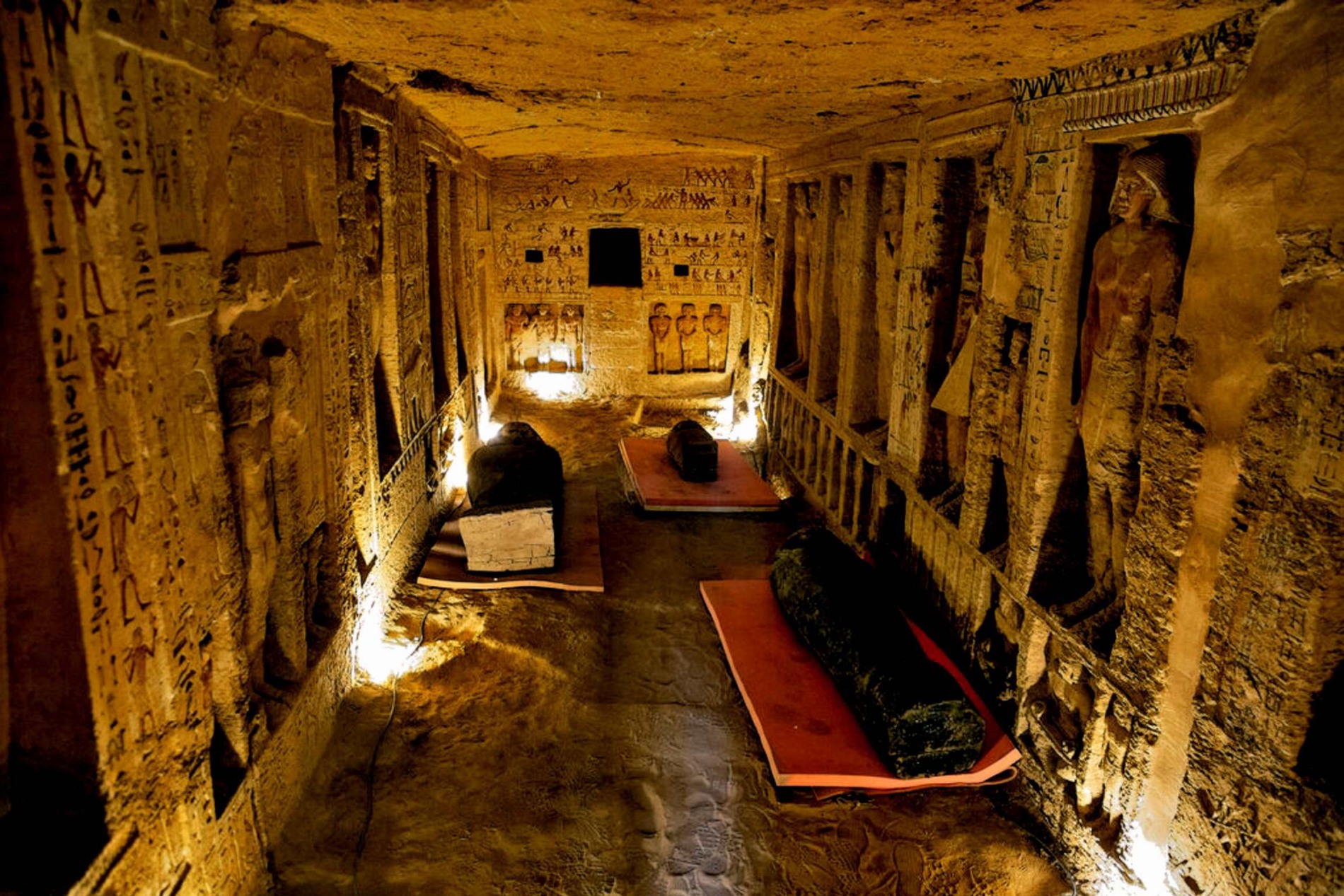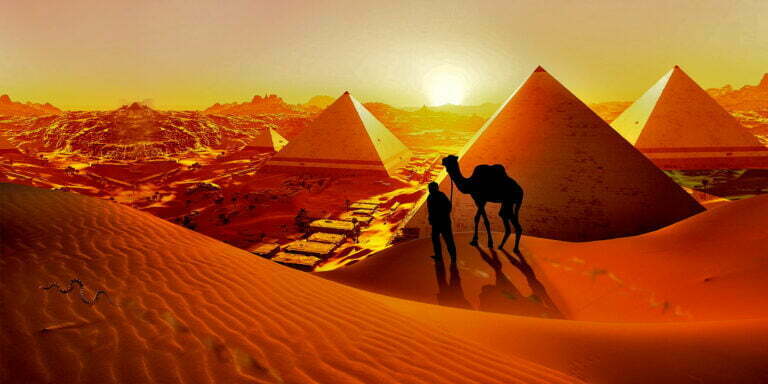Memphis and its Necropolis, or Pyramid Fields, go south from the Giza plateau, through Zawyet Elarian, Abu Ghurab, Abusir, Mit Rahina, and Saqqara, and north as far as Dahshur. It has the first large, complex stone buildings in Egyptian history. It also shows how the shape of royal tombs changed over time, from the early “mastaba” shape to the pyramid shape. There are more than 38 pyramids, including the three pyramids of Giza.
Where is Memphis Egypt
The Great Pyramid of Khufu is the only historical wonder left and one of the most important buildings in human history. Only the Great Pyramid of Khufu from ancient Egypt is still standing. Aside from the Great Sphinx, there are also the pyramids of Abusir, Saqqara, and Dahshur. In addition to these huge works of art, there are also more than 9,000 rock-cut graves from the First Dynasty to the Thirtieth Dynasty and on to the Greco-Roman Period.
Memphis and its Necropolis
The “Memphis and its Necropolis – the Pyramid Fields from Giza to Dahshur” UNESCO World Heritage Sites have been around since 1979. These places also have the ruins of many smaller temples and villages. It teaches us a lot about how the ancient Egyptians lived in this area.
Memphis was not only where kings lived and where the government was run, but it was also thought to be where the gods lived. Egypt’s government was run from Memphis during the Old Kingdom, the Middle Kingdom, and at least part of the New Kingdom. Before that, people around 3000 BC thought that Itztawi and Thebes were both towns in the same Egyptian country.
Late Period and then again during the Ptolemaic Period with the city of Alexandria, until it was surpassed by the Islamic naval city of Fustat on the Nile and its later growth, Al Qahira. There are a lot of old things at the site that show how people used to live in the ancient Egyptian city. This includes shrines, with the Temple of Ptah in Mit Rahina being the most important. Ptah was the god of Memphis in ancient Egypt. He was both the god of creation and the god of skill.
Ancient Memphis
Other important holy sites included the sun shrines in Abu Ghurab and Abusir, the temple of the god Apis in Memphis, the Serapeum, and the Heb-Sed temple in Saqqara. More than eight different kingdoms had their authority centralized in this one city. It had palaces, and some of the palace of Apries, which had a view of the city, is still there. Around the houses and churches, there were places for people to live as well as shops for craftsmen, dockyards, and arsenals. Some of these structures are still there.
Interesting Facts about Ancient Memphis Egypt
The ancient Egyptian city of Memphis was the capital for eight dynasties in a row. It was at its best during the 6th dynasty, when it was the center of worship for Ptah, the “God of Creation and Artworks.” The creator god Ptah, his wife Sekhmet, and their son Nefertem were the most important gods in the city.
Tutankhamun
At the end of the second year of his rule, Tutankhamun (1332–1323 B.C.) moved the ruling court from Akhenaten to Memphis city. After the time of Atenism, when there was only one god, he set up temples and customs. In Saqqara, there were also the remains of important people from Tutankhamun’s time, such as Horemheb and Maya. Under the rule of Ramses II, the city grew and changed even more.
He built many monuments in Memphis and Egypt and decorated them with huge images of glory. Merneptah, who took over after him, built a house and fixed the wall around the Ptah Temple. During the 21st and 22nd dynasties, Ramses II built many holy buildings. It was right in the middle of all the trouble that the huge Assyrian threat caused. But in 332 B.C., Alexander the Great was named pharaoh in the temple of Ptah.
He had many accomplishments, but his religious ones were the most important. He was buried in the temple of Ptah when he died. After Thebes, the New Kingdom of Egypt grew stronger, but Memphis Egypt started to fall apart during the 18th dynasty of the Ptolemaic dynasty. It was the second city to be built after Alexandria. Alexandria was still Egypt’s most important city. Memphis, Egypt, stayed the second city until 641 C.E., when the city of Fustat was built.
Great Temple of Ptah
This beautiful temple was made for the god Ptah, who was the god of art and creation. People in ancient Egypt thought it was the biggest and most important building. It was one of the three most important places to worship in ancient Egypt. The other two were Ra’s temple in Heliopolis and Amun’s temple in Thebes.
Ramses II built Temple of Ptah
This beautiful temple was built to honor Ramses II and the three gods of the state: Amun, Ptah, and Horus. Its ruins were found in 1942. It shows that the southern part of the city had a lot of sacred buildings that paid a lot of attention to God Ptah, who was the most important god in Memphis, Egypt.
Hathor Temple
This small temple was built to honor Hathor, a goddess. It is close to the Karnak Temple in terms of culture. During important religious holidays, this shrine was mostly used for business.
Temple of Ptah Built by Pharaoh Merneptah
Merneptah was the king who built this temple and gave it to the god Ptah. In the 20th century, Flinders Petrie found it. It was already in ruins when the city built up around it and buried it.
Temple of Ptah and Sekhmet Built by Rameses II
It is from the 19th dynasty and was made for Ptah and Sekhmet, who was his wife. There are two huge figures from the Middle Kingdom in the room. These two statues were moved to Memphis museum.
Necropolis of Saqqara
It is in the northwest of the Egyptian city of Memphis. It has a lot of tombs and graves, including the Saqqara Step Pyramid, which Imhotep constructed during the third dynasty to bury Pharaoh Djoser. It is the first pyramid in Egypt to be made up of six Mastabas.



